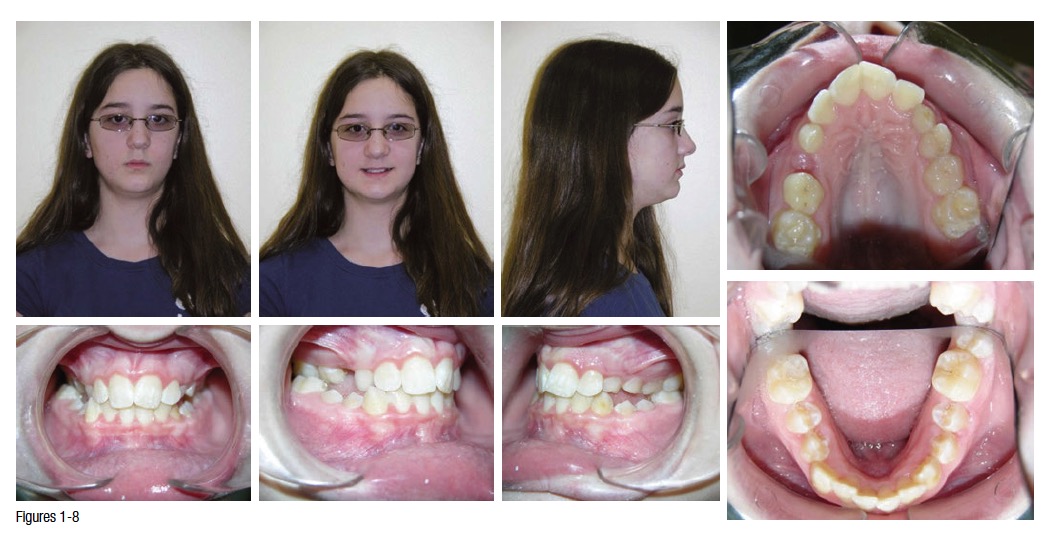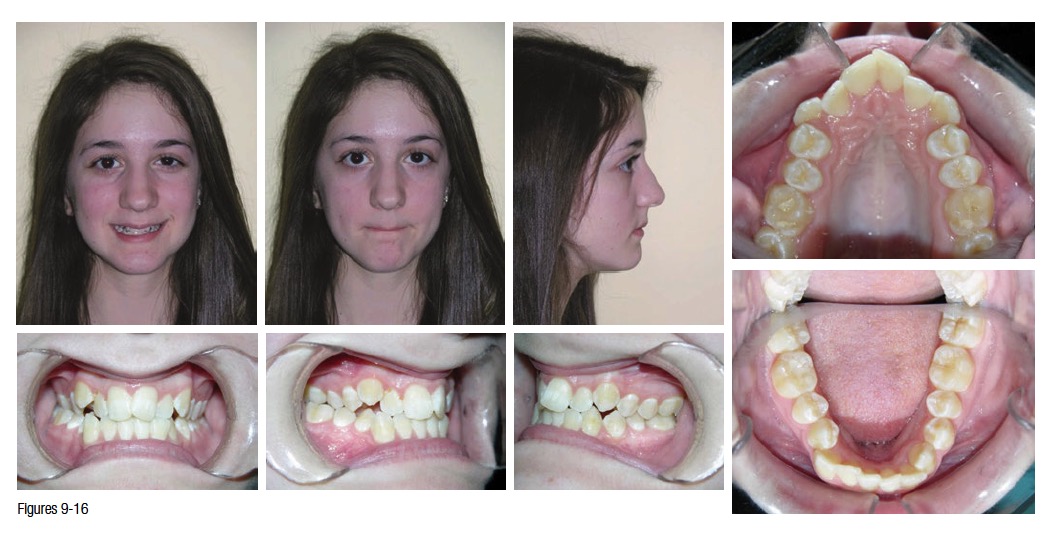Dr. Matthew Fortna finds a solution for a patient with enamel defects
This 9-year-old female patient presented to our office with narrow and tapered arches, posterior crossbite, crowding, and impacted maxillary canines. She was referred by her pediatric dentist. The decision was made to expand and develop both arches as the patient’s teeth erupted (Figures 1-8).

[userloggedin]
Following a brief interceptive phase of treatment, all permanent teeth erupted into position. The patient, now age 13, wanted her teeth aligned with clear aligners, rather than traditional braces. The decision was made to further develop the arches and improve alignment with fixed appliances in the hopes of creating an ideal aligner patient (Figures 9-16).
Early in fixed appliance treatment, however, there were many debonded brackets and multiple unplanned visits for repairs. Different adhesives were used, all with a similar result. The quality of this patient’s enamel did not seem very conducive to adequate bonding of brackets. After several months of emergency visits to our office, the decision was made to remove the remaining brackets and initiate ClearCorrect therapy. We highlighted the esthetic and hygienic advantages of aligner therapy to the patient and her mother. Mom appreciated that the visits would be less frequent and with fewer emergencies.
Records were taken for ClearCorrect, including a PVS impression, bite registration, and photos (Figures 17-24). We also submitted a pano of the patient, and digital dental casts were created by ClearCorrect based on the impressions that were sent in (Figure 25). We submitted the case to ClearCorrect with the chief complaint of crowding and tapered arches. We requested both arches be treated as well as an improvement of midlines, overjet, overbite, and idealized archforms. We requested to expand arches, and noted to only use proclination, distalization, and IPR if needed. At this point in her treatment, the patient had Class I molar and canine relationships.
 ClearCorrect presented a treatment setup, which included their proposed treatment plan. At this same time, ClearCorrect sent a set of starter aligners for the patient to wear, which were designed to ease the patient into treatment while treatment planning was completed. The treatment setup was approved, and production of the aligners began.
ClearCorrect presented a treatment setup, which included their proposed treatment plan. At this same time, ClearCorrect sent a set of starter aligners for the patient to wear, which were designed to ease the patient into treatment while treatment planning was completed. The treatment setup was approved, and production of the aligners began.
Treatment included four estimated phases of treatment, each phase consisting of four sets of aligners. ClearCorrect shipped aligners four sets at a time, which allowed for revisions to be made to treatment at no added cost. After the first phase was received from ClearCorrect, the patient was seen in our office for fitting of the first set of aligners. The aligners fit well, and the patient was instructed to wear this set of aligners for 3 weeks. She was given a second set of aligners to take home, which she would change out at home. She would return to our office in 6 weeks to be seen again.

 Treatment progressed smoothly, and once the second phase was received from ClearCorrect, engagers were placed on teeth Nos. 6, 7, 8, 9, 10, 22, and 23. An engager template was provided by ClearCorrect for easy placement of the engagers. We always test the fit of the template first. If the fit is good, we then air-dry, followed by lubricating the engager wells and flashing areas of the template with petroleum jelly. Next, we fill the wells of the template with G-aenial™ Universal Flo (GC America) and set aside. We then condition the engager areas of the teeth with one-step etch and primer (Unitek Transbond™ Self Etching Primer), and lightly air-dry again. Finally, we seat the engager template, light cure, and carefully remove the template. We polish flash with a dry high-speed and polishing bur (Reliance). Once completed, the aligner will snap into place, as it is essentially identical (thickness aside) to the template used.
Treatment progressed smoothly, and once the second phase was received from ClearCorrect, engagers were placed on teeth Nos. 6, 7, 8, 9, 10, 22, and 23. An engager template was provided by ClearCorrect for easy placement of the engagers. We always test the fit of the template first. If the fit is good, we then air-dry, followed by lubricating the engager wells and flashing areas of the template with petroleum jelly. Next, we fill the wells of the template with G-aenial™ Universal Flo (GC America) and set aside. We then condition the engager areas of the teeth with one-step etch and primer (Unitek Transbond™ Self Etching Primer), and lightly air-dry again. Finally, we seat the engager template, light cure, and carefully remove the template. We polish flash with a dry high-speed and polishing bur (Reliance). Once completed, the aligner will snap into place, as it is essentially identical (thickness aside) to the template used.
After the fourth phase of treatment was received and administered, a refinement to treatment was requested in order to detail the alignment further and attempt more maxillary arch expansion. After this phase of treatment, the patient was happy with the results and was anxious to receive retainers (Figures 26-33). While the posterior occlusion was not yet completely ideal at this point (as is the case with most clear aligner cases upon completion), we anticipated the occlusion would settle into proper occlusion during the retention phase. We decided to have Hawley retainers made for the patient, and we incorporated an expansion screw in the maxillary retainer to titrate additional expansion during retention.
Overall, the patient and mother were thrilled with the transformation of her smile. The process of wearing clear aligners was far more bearable for this patient than fixed appliances (braces). As it turned out, the patient was not a good candidate for traditional braces due to enamel defects. We were happy to be able to deliver the modality of care that the patient wanted given these limitations, thanks to ClearCorrect.
[/userloggedin]
[userloggedout][/userloggedout]
Stay Relevant With Orthodontic Practice US
Join our email list for CE courses and webinars, articles and mores





